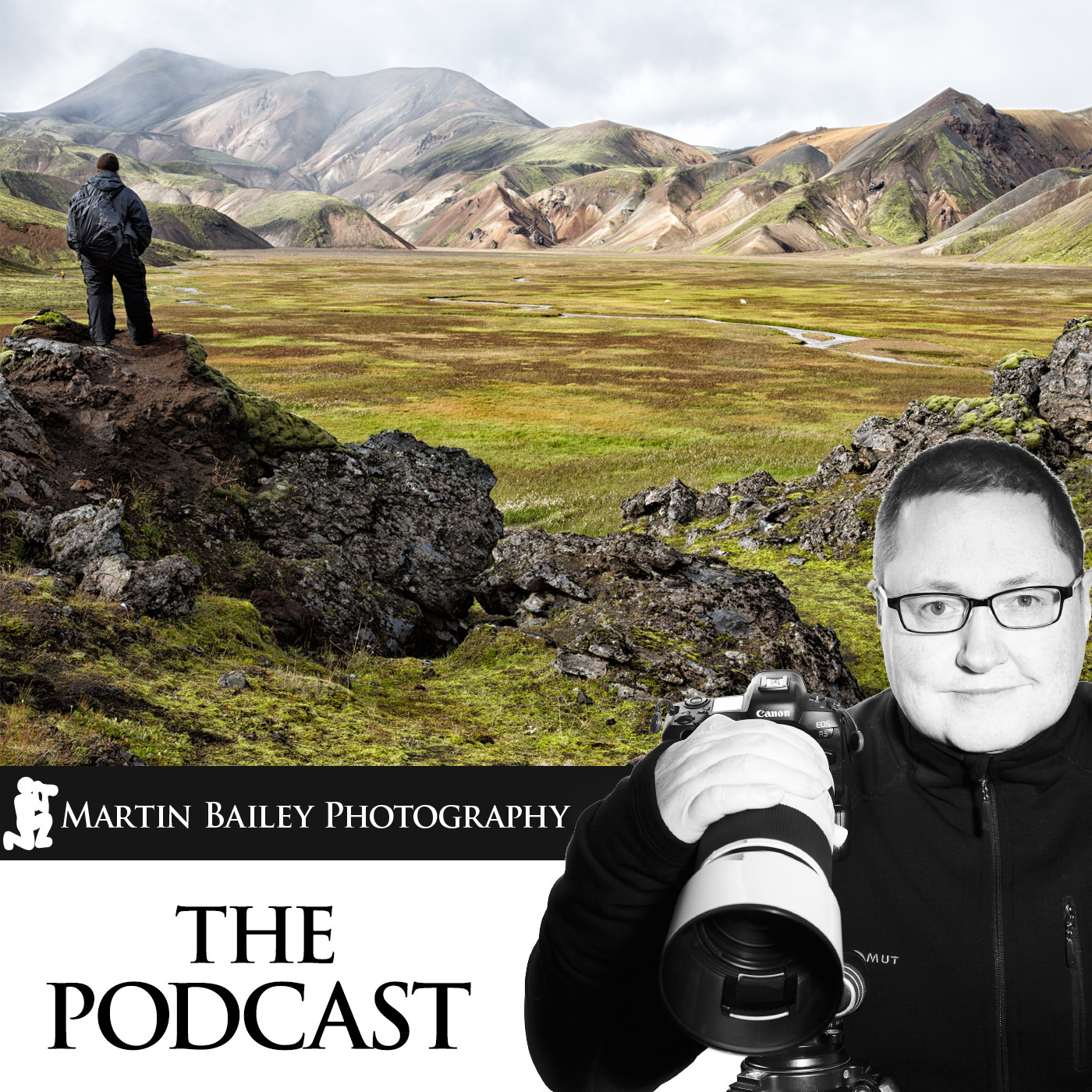 0:0015:12 | Visit Library for MBP Pro eBooks |
This week we complete our visual journey joining me on our second Japan Winter Wildlife tour, and we also, with this episode, complete a total of nine episodes to share my entire 2023 Japan Winter season. It was an interesting season, partly because we had to work around a number of changes imposed on us by the pandemic and also because my usual assistant for these to tours broke her wrist just a few weeks before we started the tours and was replaced by another lady who kindly stepped in at the last minute. I’m eternally grateful to both of them for all they do to help make these tours what they are, and although it was taxing at first, we now have two people that can help out and back each other up if necessary, which is great!
So, we’ll jump in as we arrive at the port town of Rausu, and embark on our first trip out to photograph the Steller’s Sea Eagles and White Tailed Eagles. These are both magnificent birds, but over the years, I’ve gravitated more towards the Steller’s Sea Eagles, and this has filtered through to how many of each bird I shoot, as well as select during my culling process. I’ve selected ten images to look at, and nine of them are Steller’s Sea Eagles, and I’d say that 10:9 is a pretty accurate ratio.
By the time I shot this first image the light was starting to pick up. We go out before the sun rises to enable us to capture the birds in the morning glow or sometimes with the sunrise. It’s more challenging to begin with, as we make use of high ISOs or do panning shots, but then as the sun does get to work, it’s easier to get sharp images with great detail. I love how sharp the eyes and talons are on this eagle as he prepares to scoop a fish from the water.
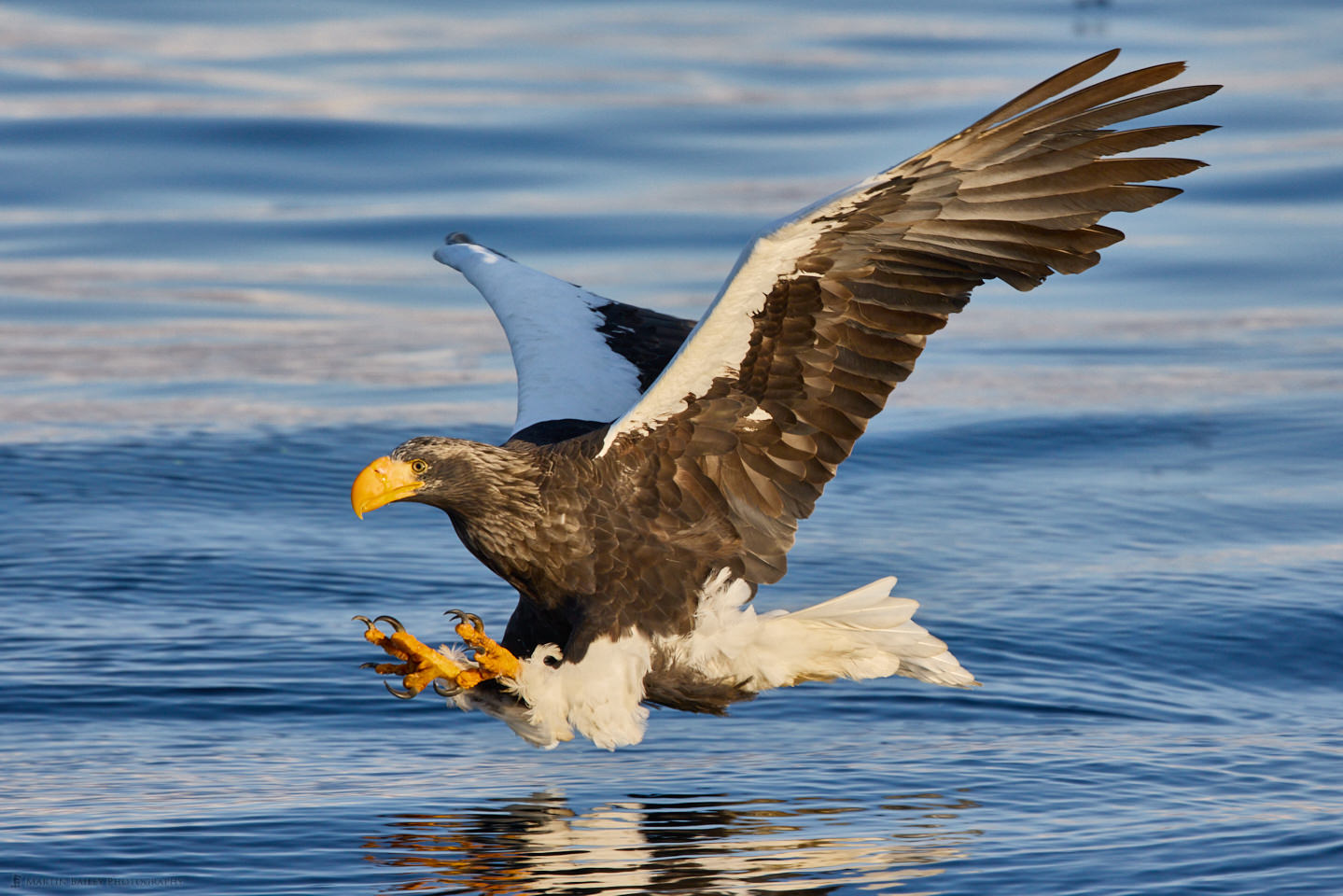
As the sun rose the following morning, there was a mist, and the sun peaked through with a pinkish color, and I was able to capture it reflecting in the water between the sea ice as this White-Tailed Eagle flew diagonally away from us. I know some of you will be thinking, “butt shot,” but I like this. I think the butt-shot stigma causes many photographers to ignore perfectly good opportunities. They help to tell a story, as the animal is always moving away from us or into the scene along our line of sight, so I don’t always lower my camera when the subject is showing their behind.
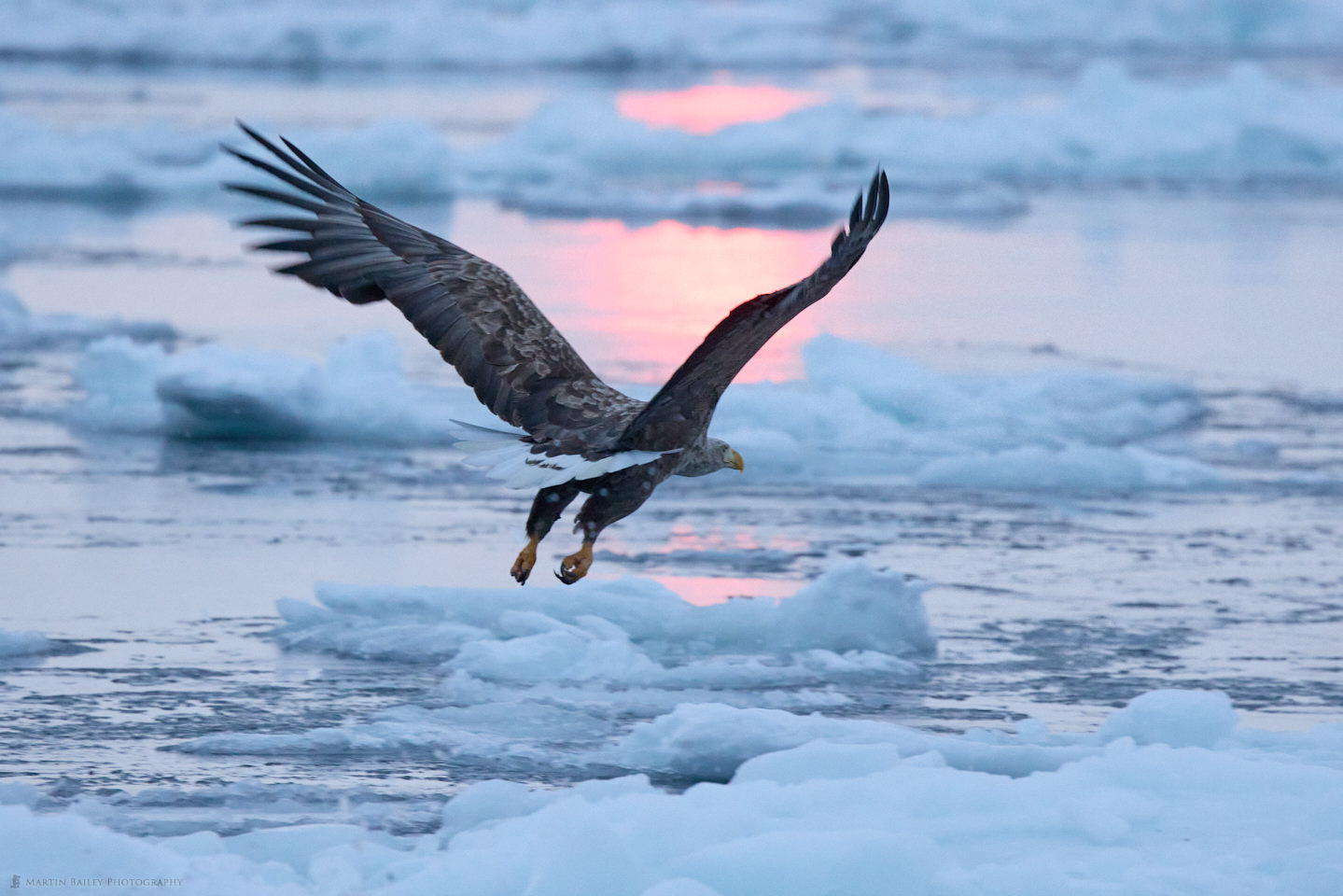
The light was low still when I shot this image, so my ISO was up at 8000, but I was able to get a shutter speed of 1/640 of a second at ƒ/8, so the image quality is fine.
I continued to manually adjust my exposure as the sun strengthened and got this next photo with ISO 6400 for a 1/1250 of a second, still at ƒ/8. We can still see a little bit of the pink sunrise reflected in the water, and I love the spread-out flight feathers of the Steller’s Sea Eagle in this shot. Of course, it’s also nice that we can see the splash as the fish is pulled from the water, and the fish’s face is also visible as it’s whisked away.
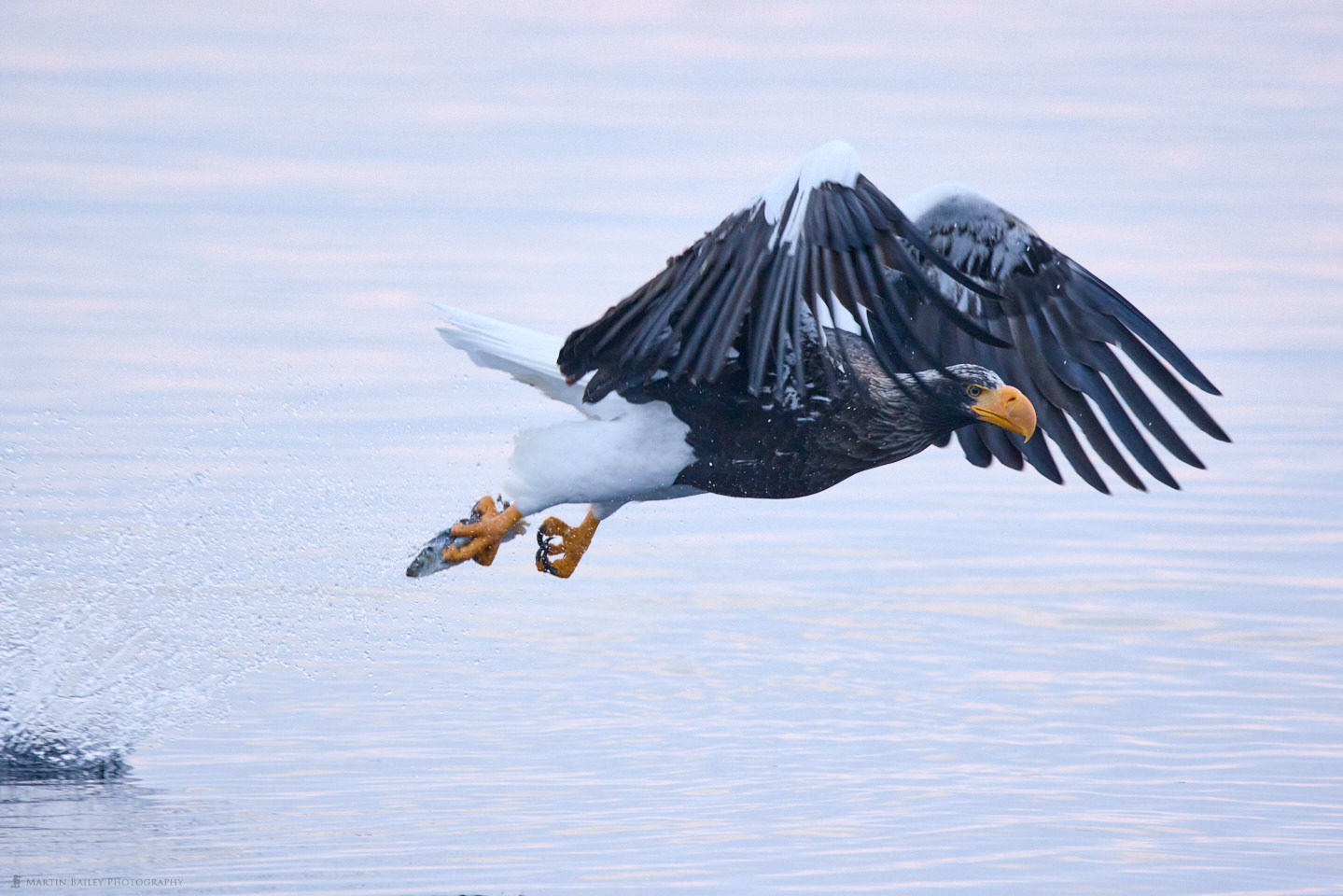
Remaining with the same settings, this next image shows what almost looks like contrails left by the tail of the eagle as he skims the surface of the water coming in for a catch, with those amazing talons stretched out forwards. As with most of my images, this is uncropped, straight out of the camera, so you can see how much risk I take when working with these subjects. I do of course miss shots as well, but when you are able to capture shots framed like this and not have to throw out pixels to crop in or rotate them, it feels pretty good.
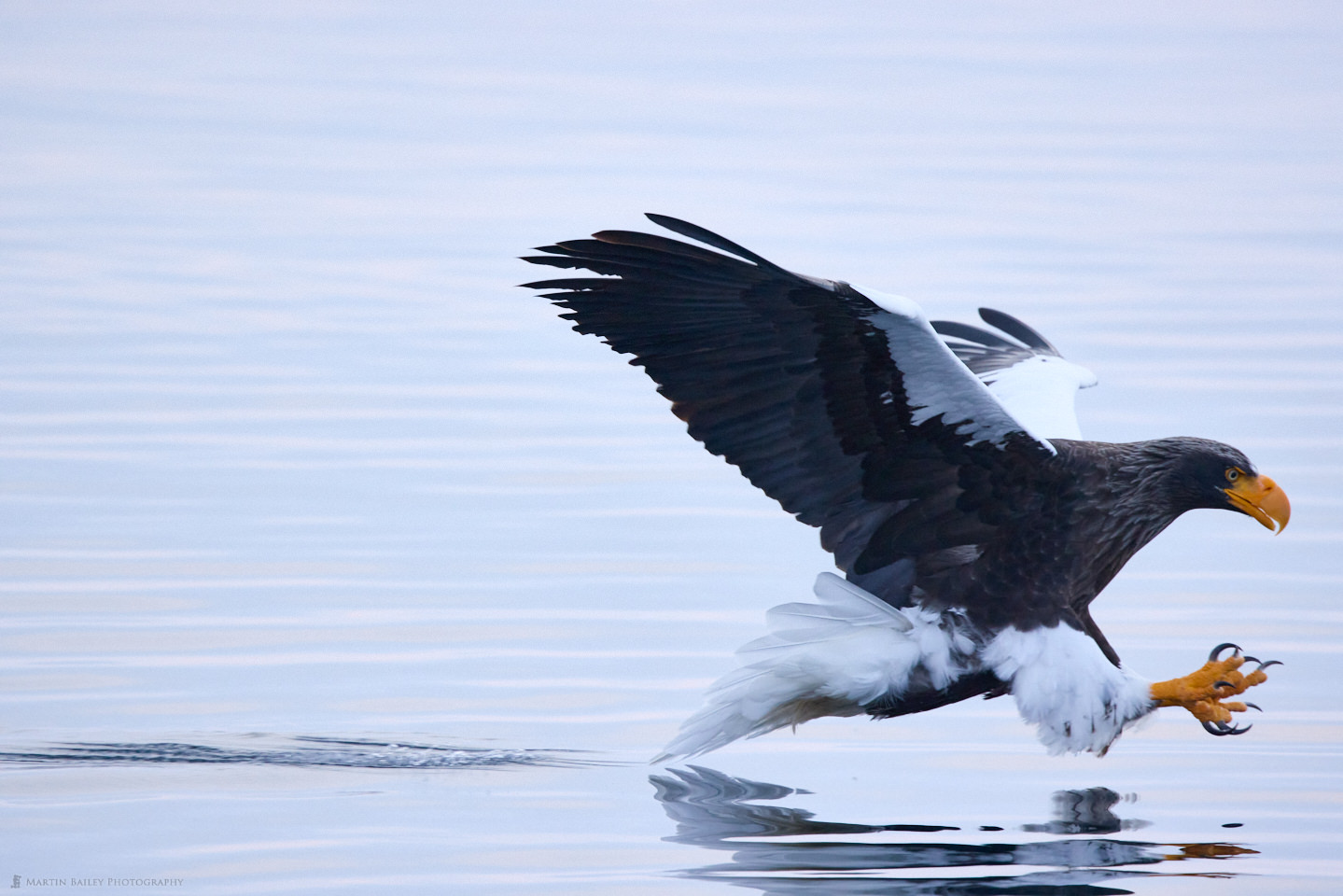
Less dynamic action in this next image, but there is still tension as the eagle teeters on the edge of the sea ice, looking to get to a fish but isn’t going to get it without taking a bit of a plunge. I don’t recall exactly what happened next, but looking through my original images, I see that he stayed in this position for quite some time, and I imagine he gave up, as I don’t have a shot of his taking a dip.
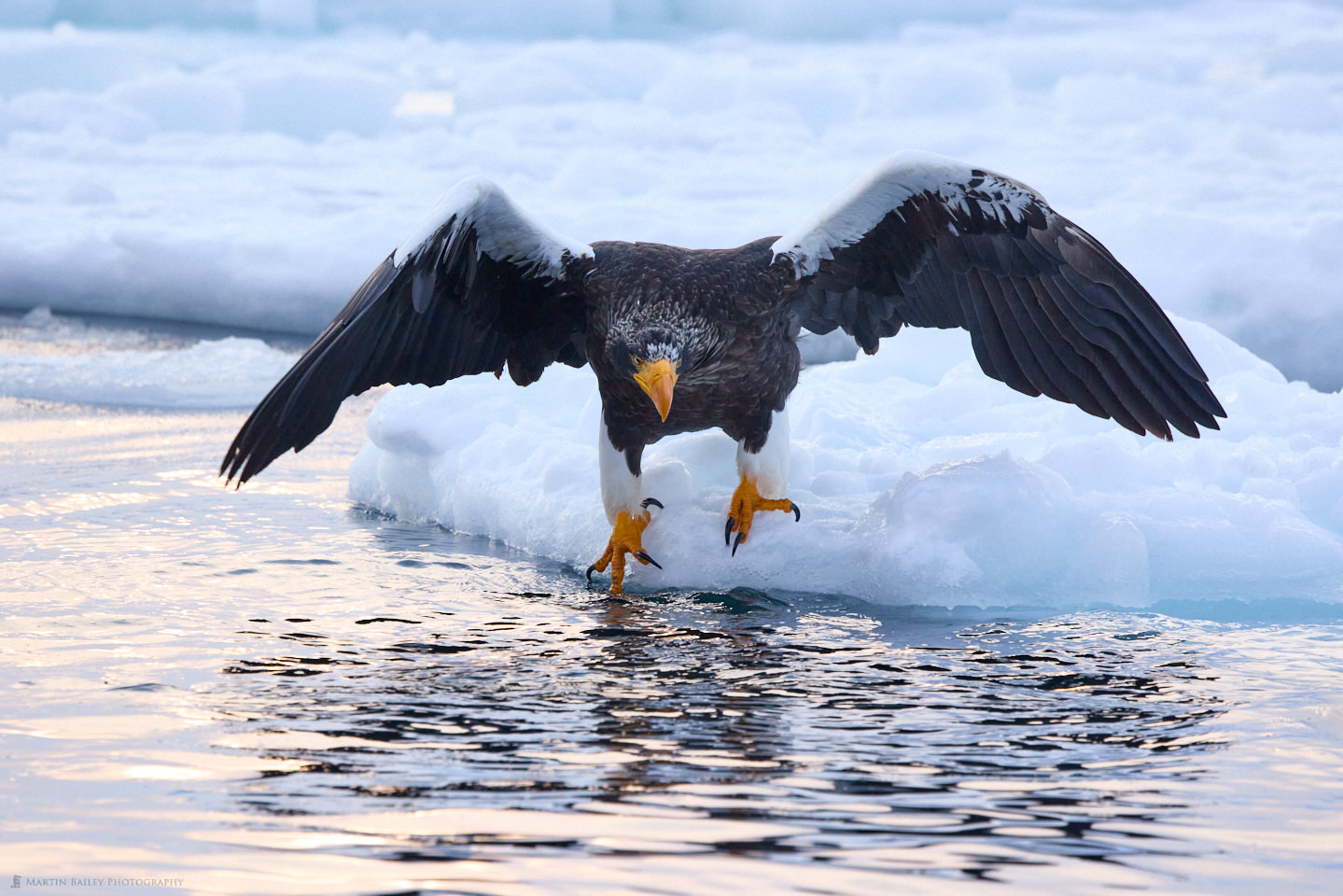
This next image gives you an idea of how fortunate we are at this location with the number of birds to photograph. Two of them are also kicking up snow, which I like to see, but a total of seven Steller’s Sea Eagles in the frame at this focal length is awesome for us and the species. I have other shots of literally hundreds of these birds sitting out on the sea ice, but they don’t all look great photographically, so you’ll have to extrapolate out from this.
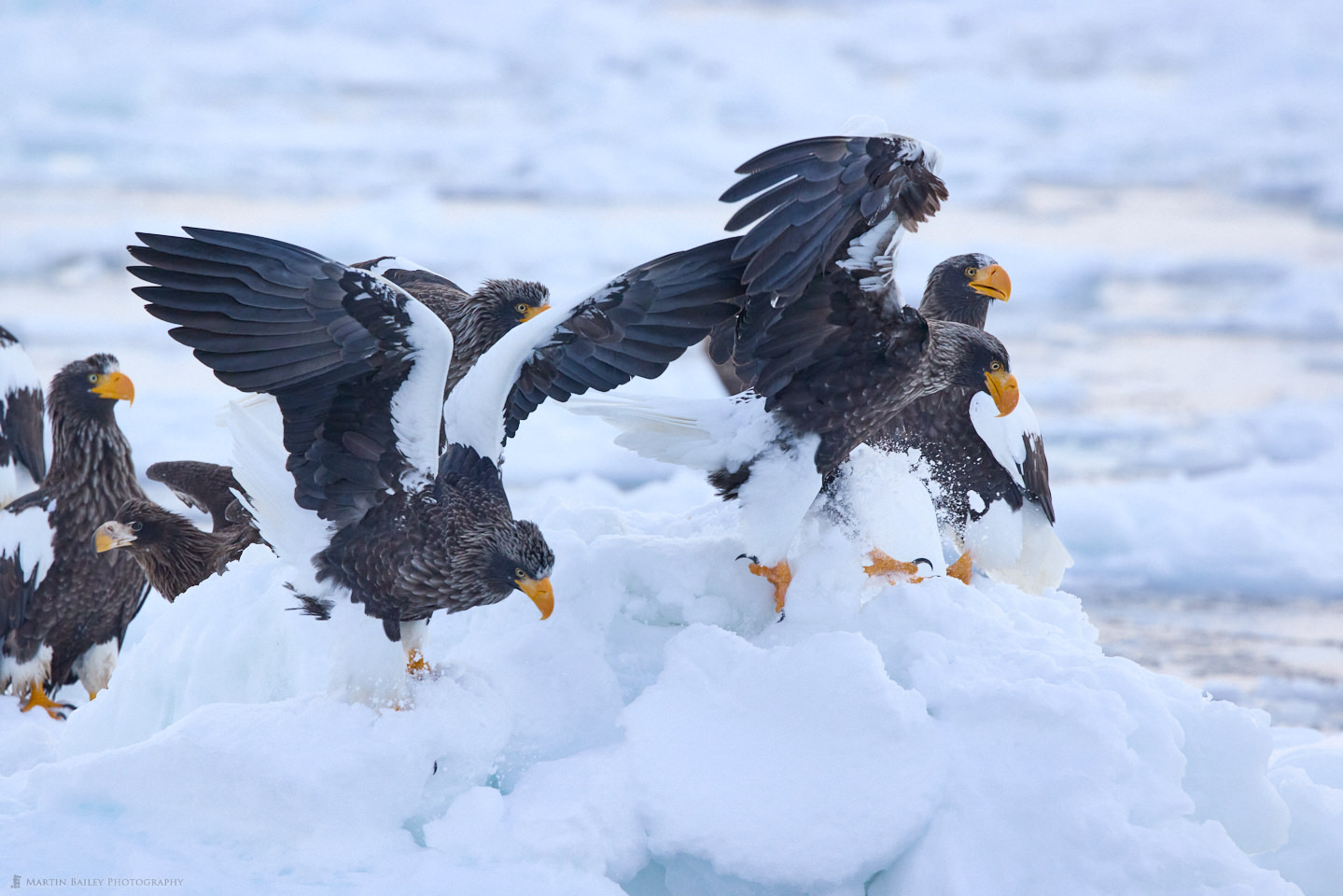
I mentioned tight cropping and risk earlier, and one mistake I have repeatedly made over the years is zooming in too tight on an eagle that I knew was about to take flight. I want the subject large in the frame, so I zoom in, knowing that when they raise their wings to fly, they will require plenty of room above the bird. I finally gave this bird enough room for its wings which I caught at full stretch here as he took his first flap to get airborne. I’d zoomed out slightly, from 500mm to 472mm, but it was just enough to stop me from clipping the bird’s wings.
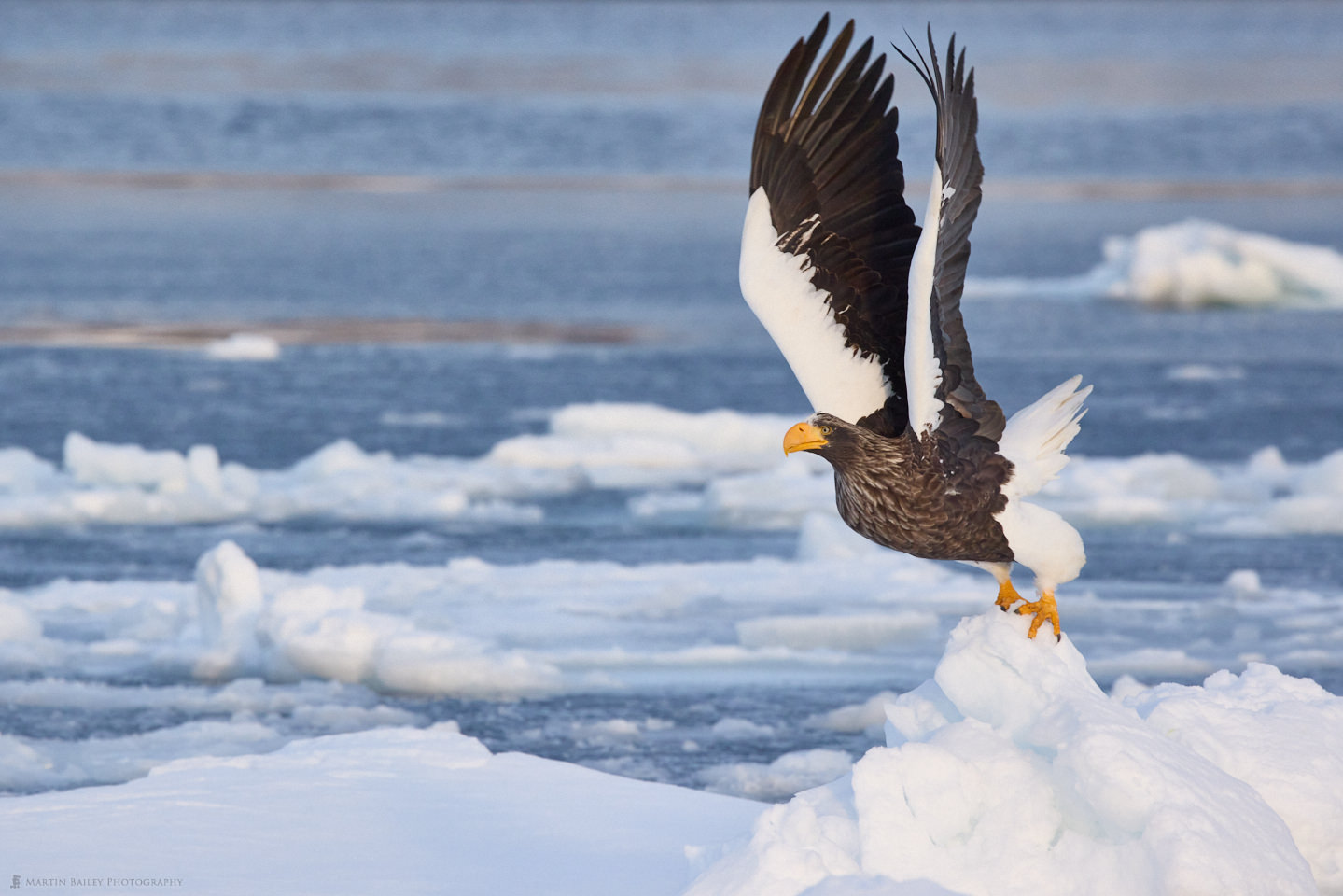
This next image is the second of two frames from my final selects, showing a bit of conflict between two Steller’s Sea Eagles. The one on the left kicked the second and knocked it over, to the obvious displeasure of the bird on the right. I was pleased to get this without clipping the bird’s wings too, but this time I was zoomed in to 500mm, although I recall consciously moving the camera up and to the right to include the wings and fallen bird, which I’d have clipped if I didn’t recompose in time.
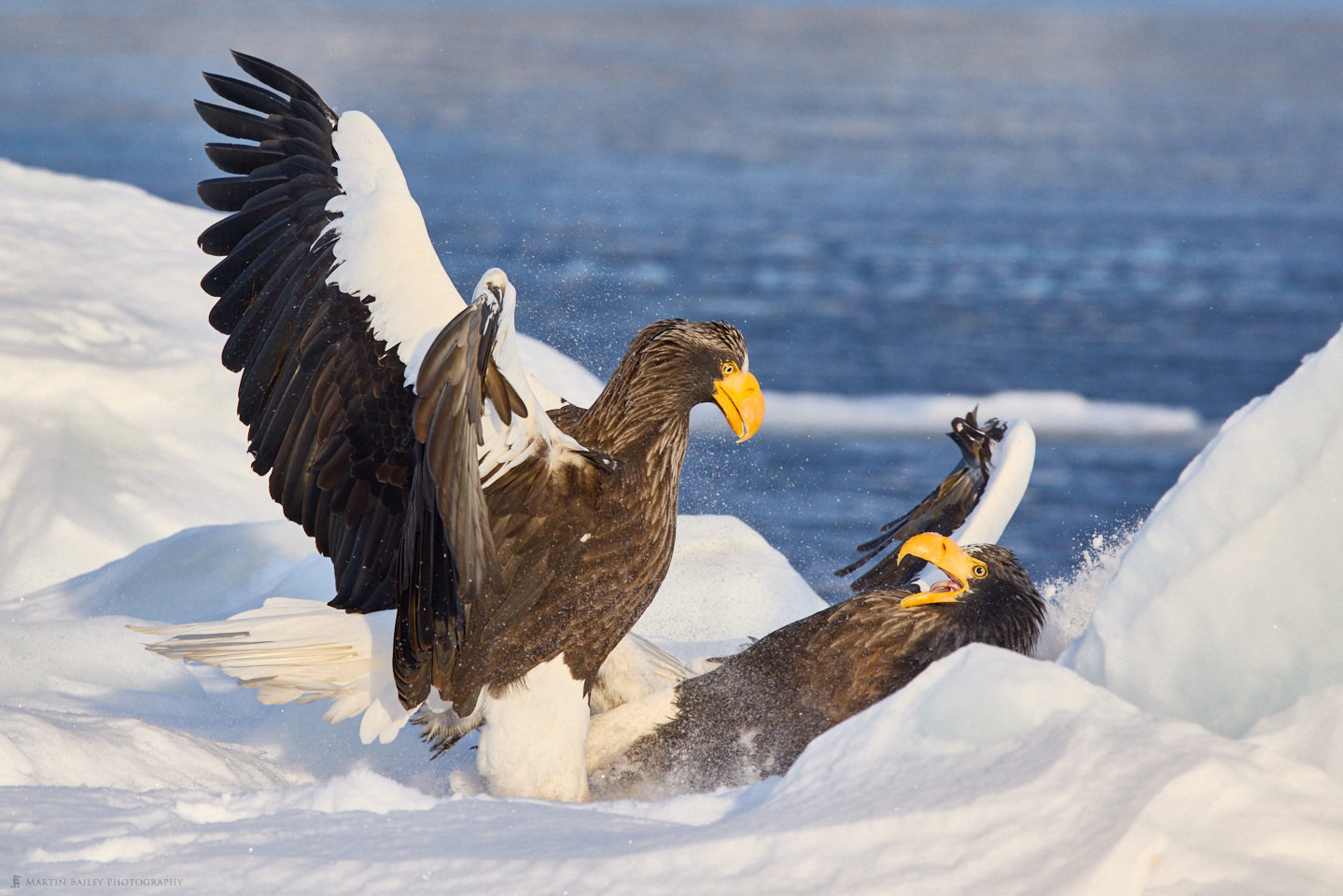
The next image shows a collision between two eagles, as they both flew in at an angle with their eyes set on the same fish. Again, a little bit of recomposing and a lot of luck resulted in me getting both birds in the frame, but I couldn’t help feeling a little bit guilty as this would be less likely to happen if there wasn’t so much competition for the fish that we are ultimately responsible for, as the people on the boat that we went out with are throwing the fish into the sea.
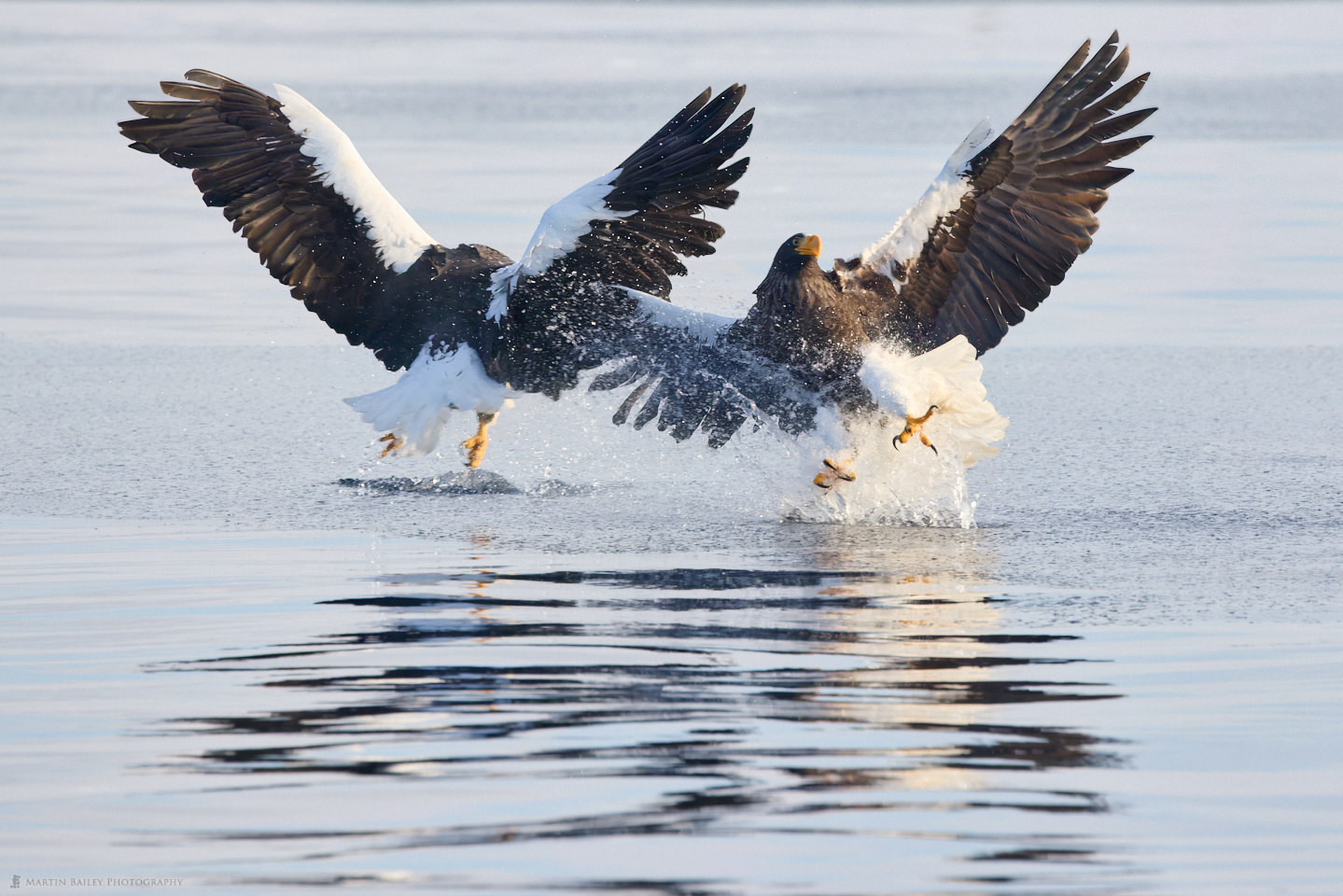
The eagle on the right of the frame was stunned for a while and floated half-sunken for about thirty seconds before a few flaps with that massive 2.5-meter wingspan lifted it far enough out of the water to start running along the water while flapping to get airborne again. I’ve not seen this before in the 18 years that I’ve been photographing the eagles like this, and I asked the people on the boat about what they do if the eagle can’t get airborne again. The skipper showed me a video on his phone showing them scooping an eagle out of the sea with a large net, and they then gave it room and time to recover on the boat before it flew away again.
Here, to finish, is another butt shot as this eagle flies away from us, signaling an end to our last shoot of this season and the last photograph of these three series of episodes sharing my favorite images from the winter of 2023.
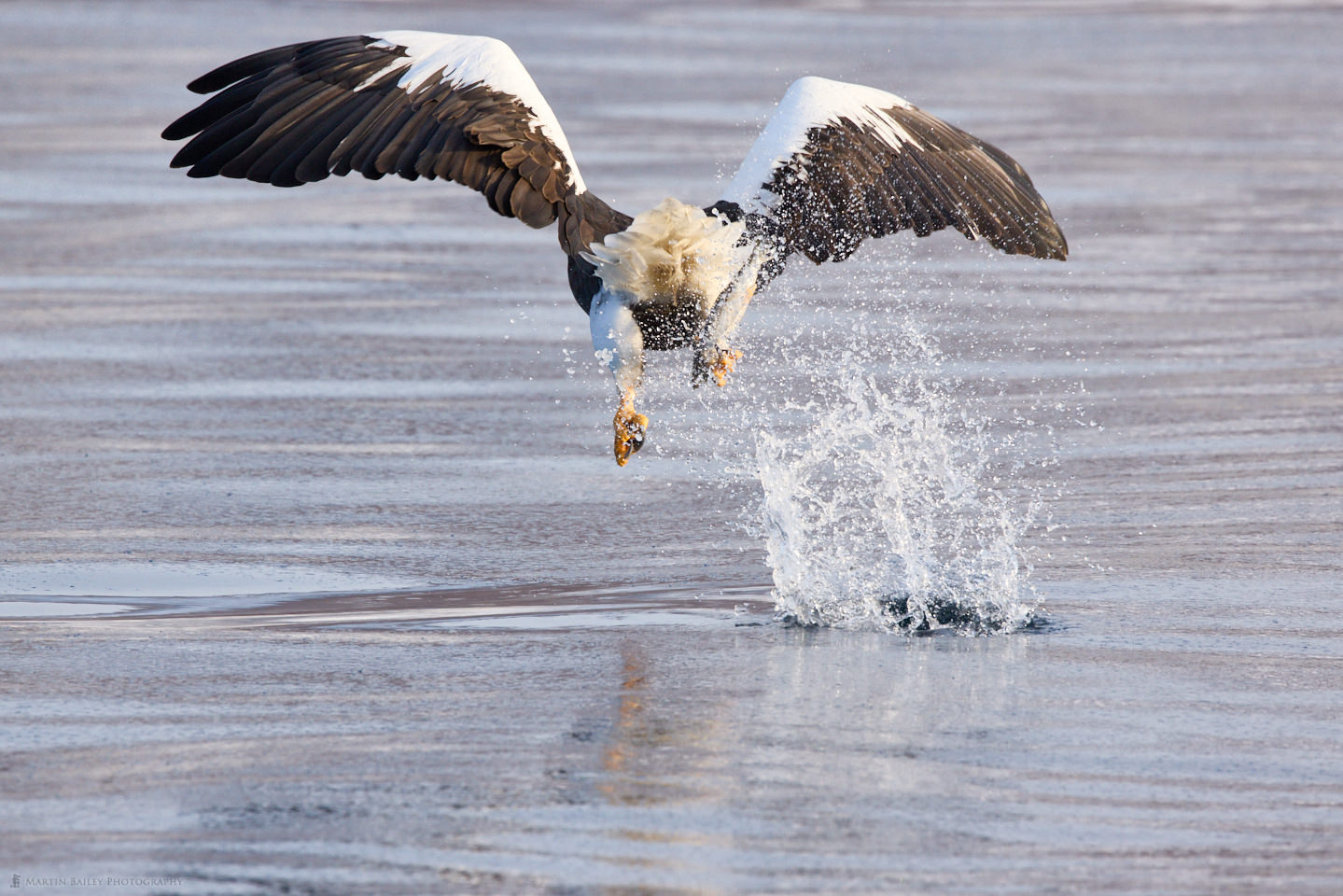
Before we finish, I’d like to play you a recording of the kind comments from the amazing group of participants I was lucky enough to spend two weeks with on this trip.
<< PLEASE LISTEN WITH THE AUDIO PLAYER ABOVE HEAR WHAT THE GUESTS HAD TO SAY ABOUT THE TRIP >>
Many thanks to the group for your kind comments and to the previous groups. It was an unforgettable season, and I’m both honored and humbled to have been able to share time with you this year. If you are considering joining a future trip, please check out our Tours & Workshops page.
Show Notes
Check out our Tours & Workshops page here: https://mbp.ac/tours
Subscribe in iTunes to get Podcasts delivered automatically to your computer.
Download this Podcast as an MP3 with Chapters.
Visit this page for help on how to view the images in MP3 files.












0 Comments